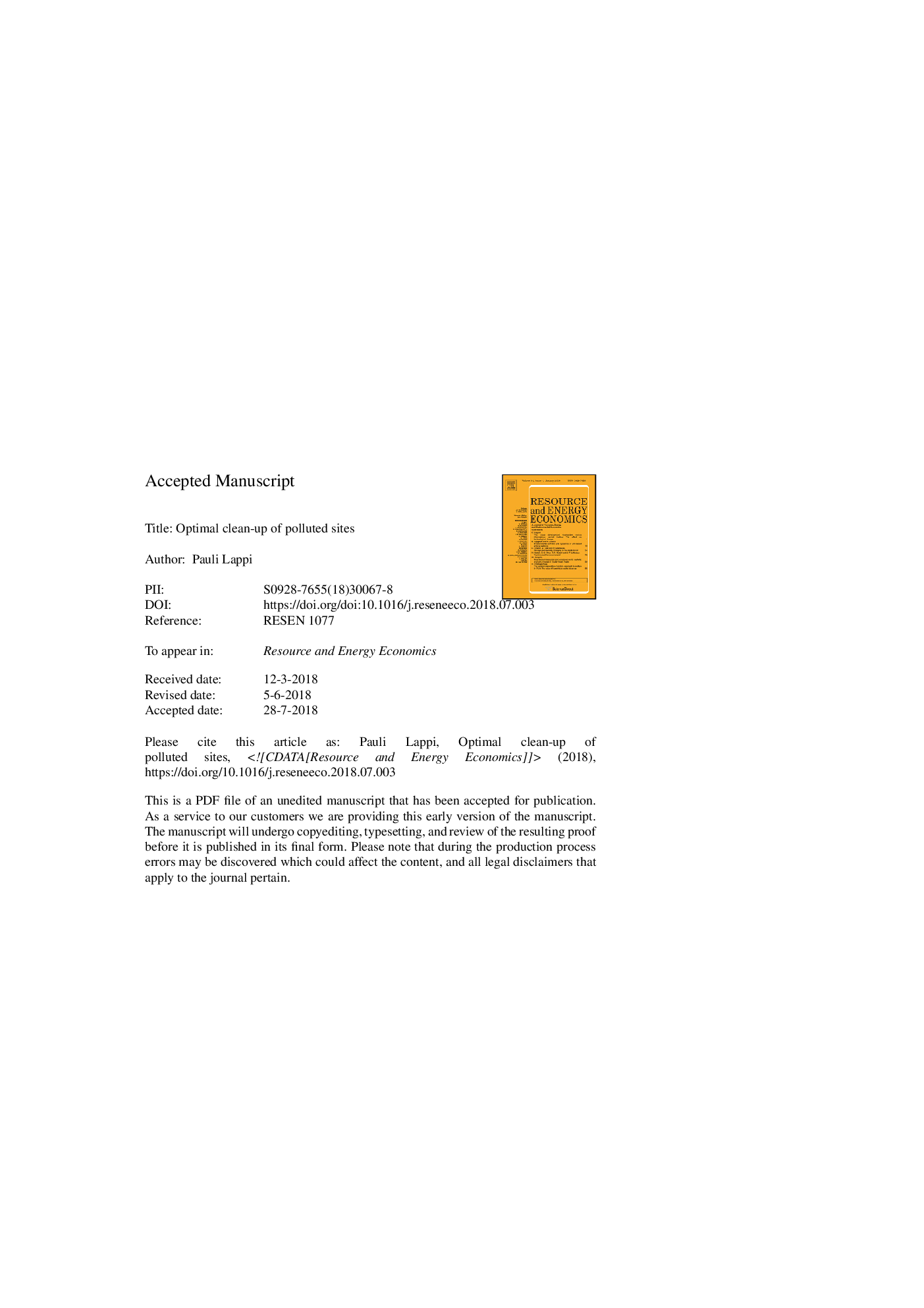| Article ID | Journal | Published Year | Pages | File Type |
|---|---|---|---|---|
| 9953075 | Resource and Energy Economics | 2018 | 39 Pages |
Abstract
A typical activity of environmental policy agencies is to clean-up polluted sites. This study uses a simple model to analyze the optimal timing of the clean-ups, their size and the optimal order to clean the sites. A waiting rule is derived, which implies that it is generally not optimal to clean a site immediately but to delay the cleaning, and that information solely on the pollution damages and clean-up costs is not sufficient to decide the optimal clean-up order. The results are discussed in the context of exhaustible resource production, mining legacy, radioactive waste containment and brownfield development. For example, the results indicate that if it is optimal to delay the clean-up, the optimal deposit by the exhaustible resource producer to the rehabilitation fund will be inversely related to the initial pollution level of the site and will be less than the cost of rehabilitation.
Related Topics
Physical Sciences and Engineering
Energy
Energy (General)
Authors
Pauli Lappi,
